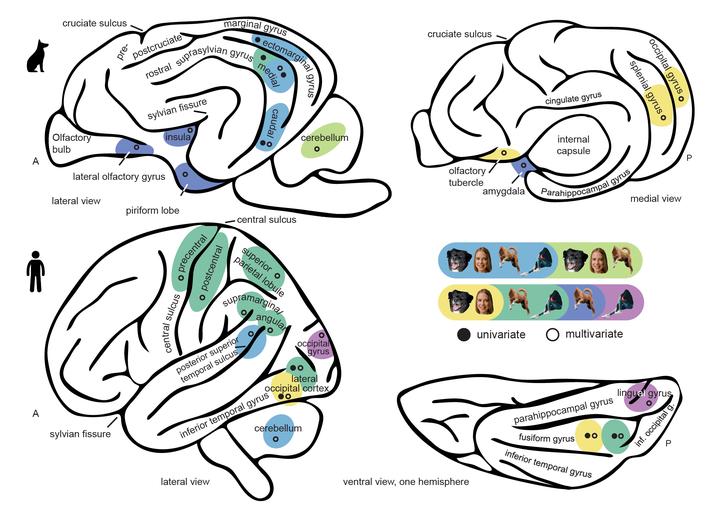Functionally analogous body- and animacy-responsive areas are present in the dog (Canis familiaris) and human occipito-temporal lobe
 Image credit: [Boch et al. 2023, CommBiol] (https://doi.org/10.1038/s42003-023-05014-7)
Image credit: [Boch et al. 2023, CommBiol] (https://doi.org/10.1038/s42003-023-05014-7)
Abstract
Accurately recognizing other individuals is fundamental for successful social interactions. While the neural underpinnings of this skill have been studied extensively in humans, less is known about the evolutionary origins of the brain areas specialized for recognising faces or bodies. Studying dogs (Canis familiaris), a non-primate species with the ability to perceive faces and bodies similarly to humans, promises insights into how visuo-social perception has evolved in mammals. We investigated the neural correlates of face and body perception in dogs (N = 15) and humans (N = 40) using functional MRI. Combining uni- and multivariate analysis approaches, we identified activation levels and patterns that suggested potentially homologous occipito-temporal brain regions in both species responding to faces and bodies compared to inanimate objects. Crucially, only human brain regions showed activation differences between faces and bodies and partly responded more strongly to humans compared to dogs. Moreover, only dogs represented both faces and dog bodies in olfactory regions. Overall, these findings advance our understanding of the similarities and differences in brain function between two phylogenetically distant mammal species. This likely reflects differences in the perceptual systems these species rely on to recognize others, and provides important insights into the foundations of social cognition and behaviour.